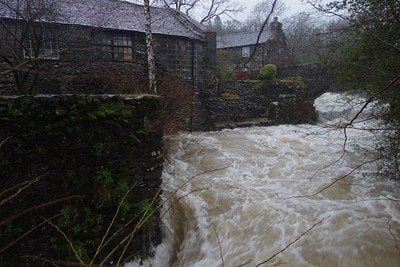

Environment
Climate Change Increased Chances Of Heavy Rains Such As Storm Desmond, Scientists Conclude
Man-made climate change has increased the chances of heavy rainfall in the area of the UK affected by Storm Desmond, scientists conclude.
Researchers from the Royal Netherlands Meteorological Institute (KNMI), University of Oxford and Climate Central used three independent analytical techniques to show that climate change has increased the likelihood of such rains by about 40%, with the range of increase running from 5% to 80%.
The methods include statistical analyses of the historical temperature record, the trend in a global coupled climate model, and the results of thousands of simulations of possible weather with a regional climate model.
“The increase we found is small but robust,” said Dr Friederike Otto from the Environmental Change Institute at Oxford University.
“And it’s worth noting that a positive attribution for an extreme rainfall event like Desmond is still somewhat rare.”
Storm Desmond struck parts of northern England, southern Scotland and Ireland on 4-6 December. It saw 13.44 inches of rain fall in Honister, Cumbria, within 24 hours – possibly a national record.
More than 5,000 homes were flooded and 60,000 were left without power, as weather affected power lines and substations.
The Oxford, KNMI and Climate Central teams are part of an international research network called World Weather Attribution, formed recently to provide close-to-real-time attribution analysis of weather events. WWA also includes the Red Cross/Red Crescent Climate Centre in The Hague, and the University of Melbourne.
“Extreme event attribution can provide valuable information to decision-makers faced with tough questions about changing risks,” said Maarten van Aalst from the Red Cross/Red Crescent Climate Centre in The Hague.
“It can also help to underpin adaptation strategies at a more local level.”
The analyses show that climate change has affected the flood hazard in northern England and southern Scotland. But the scientists caution that people’s flood risk is also affected by trends in exposure and vulnerability, such as the integrity of flood defences.
This is the second extreme weather event investigated in near real time by World Weather Attribution. For the first – the heatwaves that stretched across much of Europe in summer 2015 – they concluded that such heat waves now occur at least twice as often over a large part of Europe, and at least four times more often in some of the hottest cities.
A scientific paper detailing the results for Storm Desmond has been submitted to the journal Hydrology and Earth System Sciences.






























